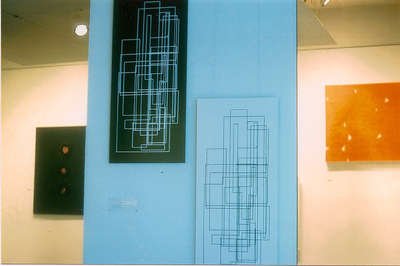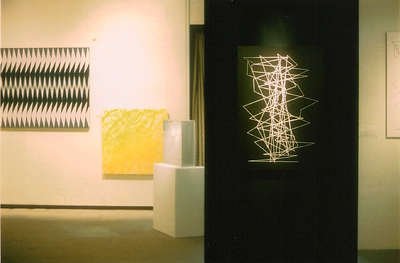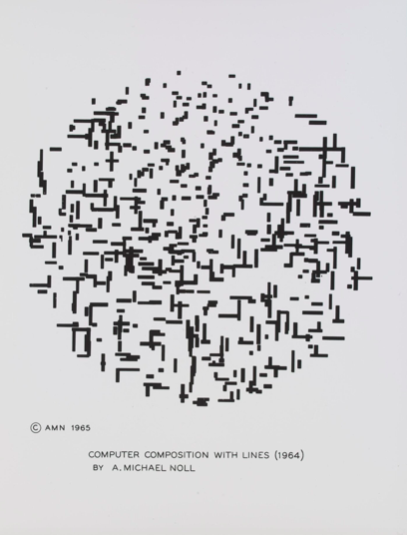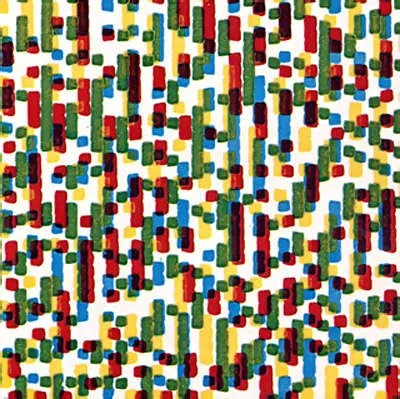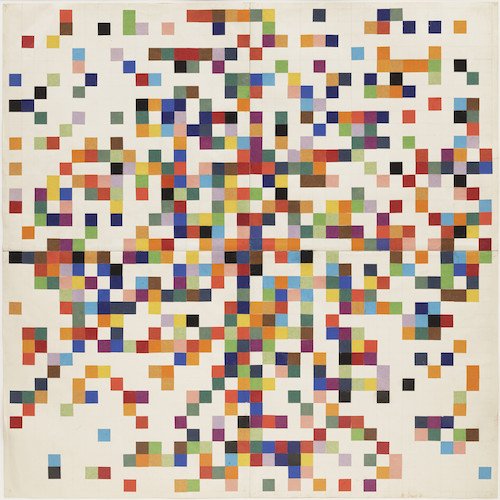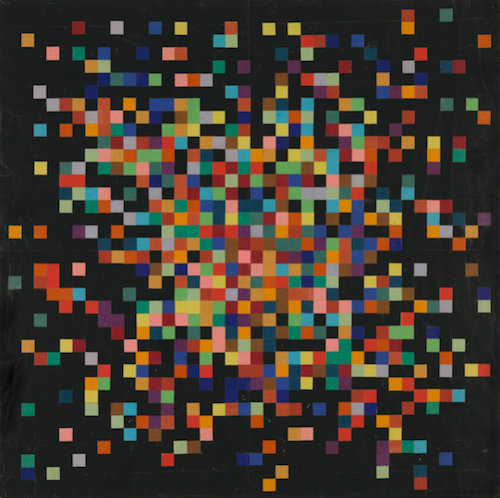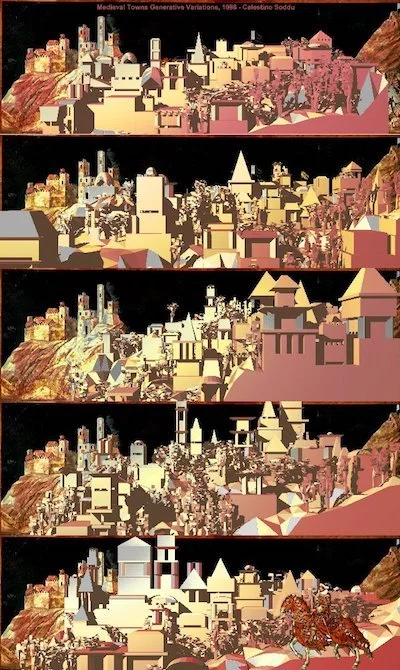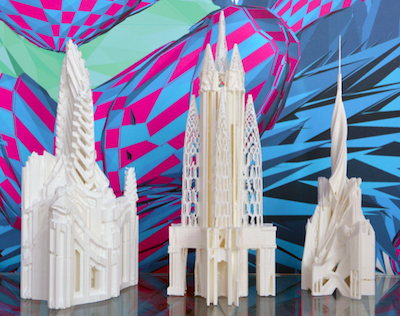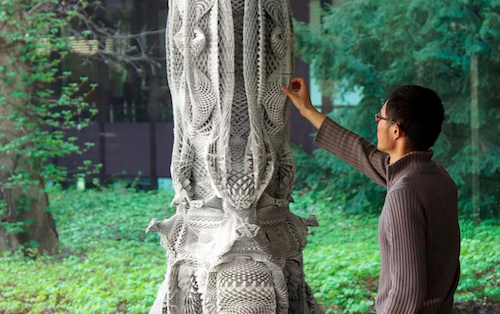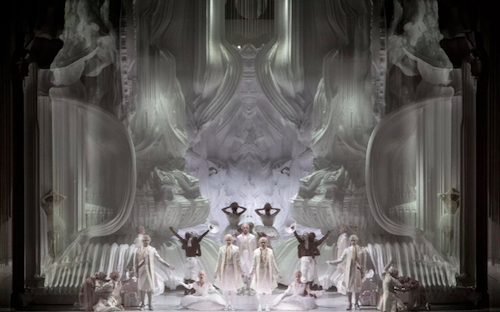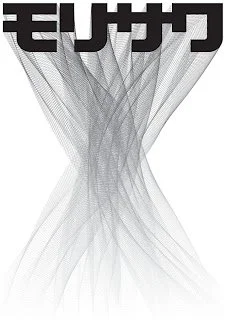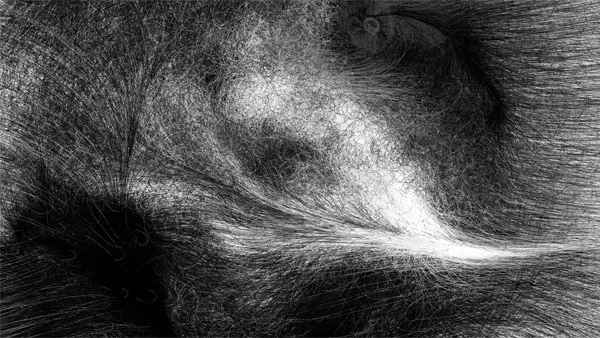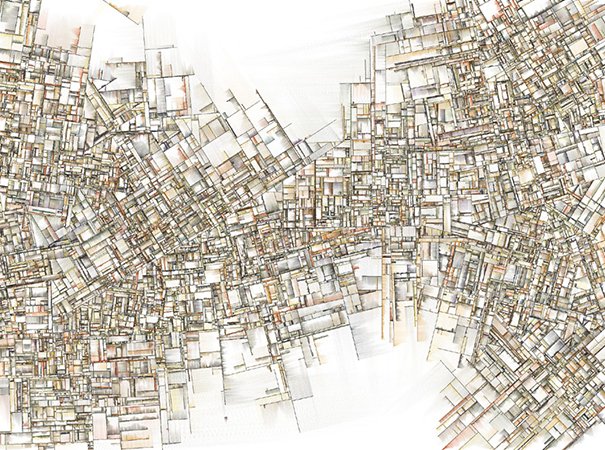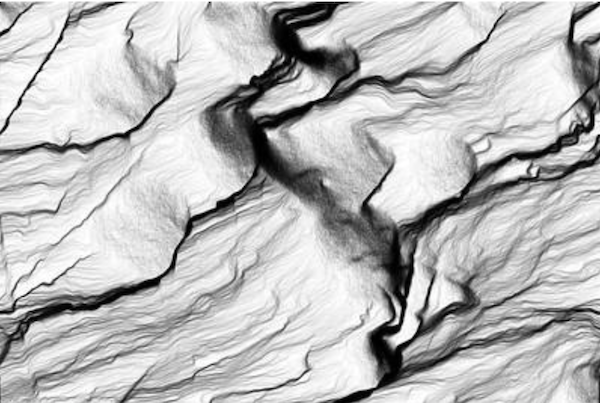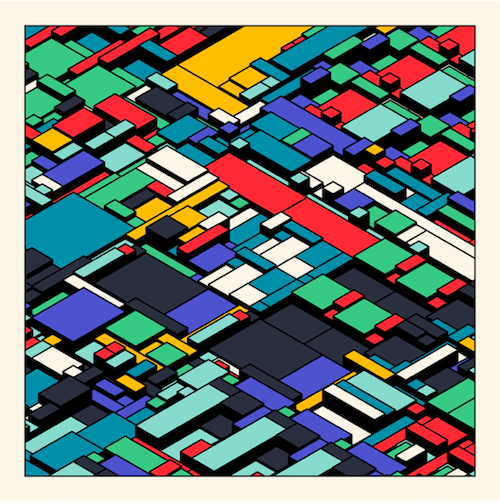A Whirlwind History of Generative Art: from Molnár to Hobbs
A journey through key artists, events and concepts that have shaped the course of generative art until today
Software is the embodiment of unseen veins of information. It has transformed our world over the past 60 years and can be considered the primary medium of progress in this era. So, it is natural that software should also be a primary medium of culture.
The principal art form expressing the nature of software is generative art, which brings the soul and beauty of the algorithm to the surface. Generative artists allow us to see into the heart of society in the information age.
What is Generative Art?
A simple definition: it is the practice of creating systems that then autonomously create art.
A more detailed definition from Philip Galanter:
‘Generative art refers to any practice where the artist uses a system, such as a set of natural language rules, a computer program, a machine, or other procedural invention, which is set into motion with some degree of autonomy contributing to or resulting in a completed work of art.’ [1]
Generative art is not a purely visual medium – it has also found application in music, architecture and elsewhere.
According to the simple definition above, generative art has existed for millennia. For example, the ancient Greeks let wind blow over the strings of an Aeolian harp, generating an uncanny sound [2]. In Chinese calligraphy, particularly in the wild cursive scripts, the fortuitousness of solid and void traces of the ink is a fundamental aesthetic principle.
The Dawn of Generative Art
We can trace the roots of modern generative art back to the second half of the last century. As suggested by Jason Bailey, an authority in this field, generative art positions itself in continuity with the artistic movements of the 20th century. Firstly, we can see the importance of chance as found in Dada, Surrealism and Abstract Expressionism. Secondly, the emphasis on machine aesthetics that we observe in Futurism and Bauhaus permeates generative art. Finally, the fragmented geometry of Analytical Cubism also plays an important role.
The first-ever curated exhibition of generative artworks was hosted in 1965 in Stuttgart, showcasing works by Georg Nees and garnering significant success. A few months later, Nees and Frieder Nake – another pioneer in this field – displayed their works together in another exhibition. This show featured pieces programmed and produced by a computer-controlled drawing machine.
At that time, the trailblazers in the US were Michael Noll and Béla Julesz, two scientists at Bell Laboratories. They held their exhibition ‘Computer-Generated Pictures’ at the Howard Wise Gallery. Noll created algorithms that generated the images in his works: this was his focus. He injected variety by attributing different parameters to the algorithms. Julesz’s work, on the other hand, focused on creating random-dot patterns generated by a computer.
Computer Composition with Lines, A.M. Noll, 1964, Victoria and Albert Museum. 3D_Julesz, B. Julesz, 1960.
The exhibition received underwhelming reviews, and the gallery did not sell a single picture. However, this new trend had a widespread impact [3]. For example, Julezs inspired Salvador Dali in the conception of the work below.
Another artist who played a significant role in developing generative art is Vera Molnár. Molnár is a Hungarian artist living in France; she’s now 98 and still an active creator. She trained in art history and aesthetics and co-founded the Groupe de Recherche d’Art Visuel in 1960.
‘My life is squares, triangles and lines. I am mad about lines,’ she once said.
Molnár devoted herself to investigating endless variations in geometrical shapes and lines. In her career, she resorted to the ‘Machine Imaginaire’, imagining herself to be a drawing machine. Her method consisted of realising works step by step, following a pre-established programme in a computer-type approach. As she explains:
‘This imaginary system allowed me to execute almost exhaustive series, without any omission or repetition.’
Then, as soon as she had the chance, she replaced this method with an actual computer [5].
V. Molnár, from the Carrées non concentriques cycle, 1974
V. Molnár, Mondrian Derange, 1974
Different Art Forms Related to Generative Art
Unlike Nees or Noll, who had scientific backgrounds, the first pure artist to approach the modern generative art practice was Ellsworth Kelly. In 1951 Kelly created a series of collages arranged in a mathematical system. The result is an organic form, a complex structure of intertwined colours.
E. Kelly, Spectrum colours arranged by chance II, 1951, MoMA, copyright 2022 Ellsworth Kelly / E. Kelly, Spectrum colours arranged by chance IV, 1951, Art Institute Chicago, copyright 2022 Ellsworth Kelly.
The generative approach can be employed in the creative process of various art forms, not just visual. For instance, one might take the work of John Cage, best known for his career as a composer and music theorist in the post-war avantgarde. One of his generative tracks, Reunion, was based on the moves of a chess game between Cage and Duchamp on a specially-equipped chessboard [6]. Cage had an undeniably major impact on many art forms, such as theatre, dance, poetry and visual arts. Apropos the latter, Cage completed his Not Wanting To Say Anything About Marcel one year after Marcel Duchamp died. In this work, Cage juxtaposed and overlapped on layers of Plexiglas text and images selected through a set of random operations based on the system of the Yi Ching – the Chinese Book of Changes. He had 46 questions with 64 possible outcomes that he used to determine the colours, the sizes and the angles of the graphic elements. These arbitrary combinations enable the viewer to interact with and read the work in various ways, completing it.
In 1998 the first European conferences on generative art took place, drawing attention to the new field for the first time. Celestino Soddu, who organised these initial conferences, is a well-known architect and has long experimented with the generative method. One of his early works, dating to 1987, was the creation of the artificial DNA of Italian Mediaeval Towns. This project focused on generating 3D models of typical Italian Mediaeval Towns with endless variations.
C. Soddu, Medieval Towns Generative Variations, 1988.
C. Soddu, 3D printed generated Baroque architectures, 2019.
Michael Hansmeyer’s practice reveals another unique approach to generative creation. As an architect, he uses computation and fabrication technologies to create an architecture of previously unimaginable forms. His post-modern computational architecture defies classification. Subdivided Columns serves as a great example of his work. In this piece he plotted an abstract Doric column based on a process of repeated subdivision. He exploits this process, traditionally used in computer graphics, to generate smooth forms, to determine the curvature of the form, to modulate its structure and to mould its surface attributes. Hansmeyer then uses a high-speed serial laser cutter to realise the physical sculpture. Although the process is preordained, the results are unpredictable, infusing Hansmeyer’s work with a balance between the expected and the unexpected.
His work has been used in several different art forms. For example, in 2018, he created the set design for Mozart’s The Magic Flute in Brussels. He has also forged pieces that appear at once synthetic and organic.
M. Hansmeyer, Subdivided Columns, 2010, copyright Michael Hansmeyer.
M. Hansmeyer, The Magic Flute set design, La Monnaie, 2018, copyright Michael Hansmeyer.
New Generation of Generative Artists
At the end of the millennium, along with the revolution in personal computing a new cohort of artists became established in the world of generative art. John Maeda, Casey Reas and Ben Fry are arguably some of the most significant. They took part in the Aesthetics and Computation Group at the MIT Media Lab under the direction of John Maeda. Maeda is a versatile figure who began his career as an engineer, moved to art and design and then to research and business, tech and investment. Throughout his artistic development he has redefined electronic media by combining computer programming with traditional creative techniques. For instance, the Morisawa 10 series was inspired by a visit to an exhibition on Shikō Munakata, a woodblock printmaker. Reas and Fry are outstanding generative artists who, in 2001, created Processing, a platform to teach the fundamentals of computer programming and simplify the compilation and the execution stages of the artwork. As an artist, Reas’s inspiration was provided by biology, psychology, AI, and robotics. He states that in his works for MicroImage he creates abstractions of systems in the natural world, rather than the appearance of the natural world.
J. Maeda, Morisawa No. 6, 1996, copyright John Maeda.
C. Reas, MicroImage, 2002-2014
C. Reas, MicroImage A-00, 2002, copyright Casey Reas.
Processing laid the foundations for the later developments in generative visual art, particularly those made by Jared Tarbell and Leonardo Solaas. Tarbell, initiated into programming at the age of 14 by his father, started to devote himself to the arts with his investigations into complexity theory, which resulted in Complexification.net. One of his first and most famous artworks is Substrate. Tarbell drew inspiration for this work from the desert sun in Santa Fe. In fact, in an interview he says that he wrote this algorithm while sitting in a coffee shop and looking at a cracked sticker in the window blasted by the sun. Solaas is a rather peculiar case, because he studied philosophy and then taught himself to be an artist and programmer. His view on generative art explores algorithmic processes for the semi-automatic production of paintings, drawings, videos and sounds. For example, his Linear Landscapes series reveals remarkable similarities to geological patterns. This algorithm creates an illusion of a three-dimensional organic surface, generating a dynamic atmosphere.
J. Tarbell, Substrate, Processing, 2004.
L. Solaas, Untitled (Linear Landscapes series), 2016.
The Turning Point of Generative Art in Contemporary Times
With the development of Blockchain and NFTs, the field has evolved and more recently culminated in what’s known as ‘long-form’ generative art. Unlike the ‘short-form’ – which consists of choosing the best among hundreds of generated images – ‘long-form’ generative art does not filter down a selected set of pieces: all the generated images will be presented to the audience. This new form is enabled by writing an algorithm to the blockchain and limiting the number of works that can be ‘minted’ from that algorithm.
Another characteristic of these scripts is that they are run to produce a new output each time an artwork is generated. As Tyler Hobbs explains:
‘Nobody, including the collector, the platform, or the artist, knows precisely what will be generated when the script is run.’
There is also a new interaction between the artwork and the collectors. Collectors are no longer just purchasing an existing piece, they are also contributing to its generation during the minting process. Admittedly this only entails clicking a button and depositing funds, but minting is usually accompanied by an emotional involvement.
Besides these aspects, it is also worth raising another fundamental point when discussing the relevance of generative art today. The choice of the selected medium has always played a significant role throughout art history. Whether it is painting, glass, stainless steel or anything else, it always interacts with the society we live in, mirroring its essential elements. Now, where are we standing with regard to media at this point? What’s the core material of our modern society? Tyler Hobbs discussed this in his essay ‘The Importance of Generative Art’, explaining how
‘at the core of everything is this fundamental value: generative art is truly working with the essence of what shapes our new digital worlds. Coding is the key.’
Coding is thus playing an extraordinary role in our contemporary world. There is no better artistic expression than long-form generative art to capture its nature.
The leading platforms providing the infrastructure for long-form generative art are Art Blocks and Gen.art. Tyler Hobbs, Matt DesLauriers, Kjetil Golid and Dmitri Cherniak are some of the most important artists who have burst onto the scene. Their works play with lines, colours, textures, thickness, movements and the like. Each result is hugely evocative, eliciting a range of feelings in the viewer.
In Hobbs’s most iconic series, Fidenza, we can notice a certain principle governing and organising every detail in each work, thus creating a specific set of visual patterns. While generating a sense of unity, each work also possesses its own characteristics. In Subscapes DesLauriers makes an algorithm that draws landscape impressions from many possible lines, levels, and colours. Golid’s most famous collection is Archetype. In this work he plays with chaos and control, starting from an algorithm for generating the possible partitions of a rectangle into smaller rectangles. Then, the artist’s colour palettes, shadings, scenes and layout define his style. Ringers by Cherniak is another significant long-form generative artwork. Its conception centres around the infinite number of ways to wrap a string around a set of pegs. The collection, the culmination of several years of work, is an absorbing and delightful range of combinations, characterised by chromatic variations in size, pegs and wrap orientation.
T. Hobbs, Fidenza 313, 2021.
M. DesLauriers, Subscapes 242, 2021
K. Golid, Archetype 581, 2021.
D. Cherniak, Ringers 537, 2021.
Over 60 years of development, several generative art practitioners have achieved astonishing results and refined the field to arrive at an exceptional sophistication.
As highlighted in this article, software has permitted the realisation of uniquely complex outcomes. Now that the progress of generative art is evolving more dynamically than ever, we eagerly await further exciting advancements.
[1] Philip Galanter, Interactive Telecommunications Program, New York University, What is generative art? Complexity theory as a context for art theory, New York, 2003.
[2] T.L. Hankins, R.J. Silverman, Instruments and the imagination, Princeton University Press, New Jersey, 2014.
[3] A. Michael Noll, ‘First-hand: early digital art at Bell Laboratories, Inc.’, Leonardo, 49, 2016.
[4] The copyright on Salvador Dalí's works, including those that are reproduced on this website, is held by the Spanish State and has been granted exclusively to the Fundació Gala-Salvador Dalí.
[5] V. Molnár, Un moment éphémère de certitude, 1980.
[6] Calvin Tomkins, Duchamp, New York, Henry Holt & Co., 1996.
